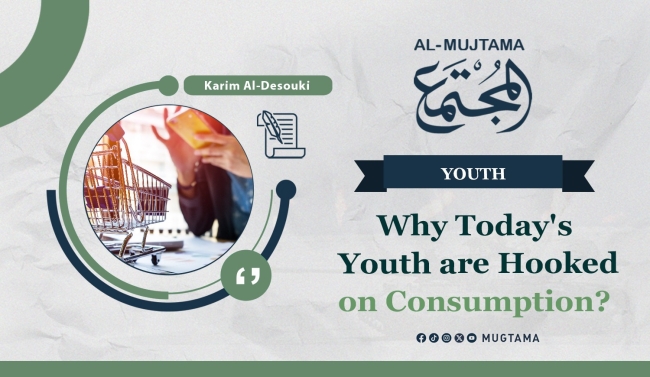In an era where technology is rapidly advancing, and globalization is intertwining various aspects of life, social media platforms have emerged as key players in shaping behaviors and consumer preferences globally, especially among the youth. Over time, these platforms have evolved from mere tools for communication and entertainment to powerful instruments of influence and marketing, significantly reinforcing consumer culture among individuals in their twenties and thirties.
Social media plays a crucial role in shaping the behaviors and consumer tendencies of today's youth. According to a study conducted by eMarketer (a company specializing in internet market research) in 2023, 85% of young people use social media on a daily basis.
Furthermore, a report by Statista, a company specializing in market and consumer data, indicated that the number of social media users worldwide exceeded 3.8 billion in 2021. This has made social media a primary driver of youth behavior and has facilitated easy access to user opinions and experiences with various products and services.
This influence affects purchasing decisions and contributes to the spread of consumer culture, as social media increasingly impacts youth desires and tendencies, encouraging their consumer inclinations through advertisements and content related to products and brands.
Social Pressure
In response to this, young people are greatly influenced by these desires, often resorting to purchasing and consuming even when they have no real need, driven by the social pressure exerted by social media, which places external appearances as a top priority.
In this context, recent statistics indicate that a significant portion of consumers—around 54%—are influenced by social media content in their purchasing decisions, according to a report issued by the Pew Research Center in 2021.
Additionally, a study conducted by Nielsen (a market research company) in 2020 revealed that 49% of consumers trust recommendations they receive through social media platforms. This aligns with a report from eMarketer, which noted that the number of social media users worldwide reached 4.33 billion in 2023, with 54% of them using these platforms to search for new products and services.
The same report highlighted that young people are the most affected age group by advertisements on social media, emphasizing the psychological and intellectual influence on this particular demographic globally, especially in the Arab world.
Advertising products and services through social media is one of the most impactful forms of advertising on youth globally. This is reflected in the average amount of time they spend on these platforms, which is 3.7 hours per day, according to Hootsuite (a company specializing in social media management).
Arab Youth
The situation is no less impactful than its global counterpart. A study conducted by the Gulf Research Institute in 2022 revealed that 60% of Arab youth consider social media a primary source of information about products and services.
Additionally, a study conducted by Umm Al-Qura University in Saudi Arabia in 2021 found that 70% of young people rely on social media for research and consultation before making purchases.
“Influencers” are one of the main factors contributing to this significant influence of social media on the youth. They possess the ability to change consumer preferences and guide them toward specific products.
Hootsuite reported that 73% of influencers are effective marketing tools for brands, and product manufacturers already utilize them for promotional purposes.
Targeted advertising for various youth segments plays a significant role in reinforcing consumer culture, as companies use big data to direct advertisements precisely to the appropriate audience.
In this regard, a study published by Forbes magazine in 2021 indicated that 67% of users feel that advertisements on social media influence their purchasing choices.
With the increasing reliance on online shopping, a survey conducted by The Economist in 2022 found that 85% of consumers prefer to shop online after seeing products on social media.
Of course, this influence does not come without its negative aspects. A study published by the Journal of Social Sciences in 2023 found that excessive exposure to advertisements and marketing content can lead to “increased social pressure” to possess the latest goods and services. This contributes to excessive consumer culture that often surpasses individuals' actual needs.
Consequently, social media has become a “facilitator” for addiction that is no less dangerous than drug addiction, whether in terms of psychological or financial impact, according to the aforementioned studies.
Thus, there is an urgent need to raise consumer awareness, particularly among the youth, and encourage them to adopt conscious and responsible consumption. Achieving this can only be accomplished by instilling “non-material” values in their hearts and minds and challenging the culture of appearances reinforced by social media.
-------------------------------------------------------------


